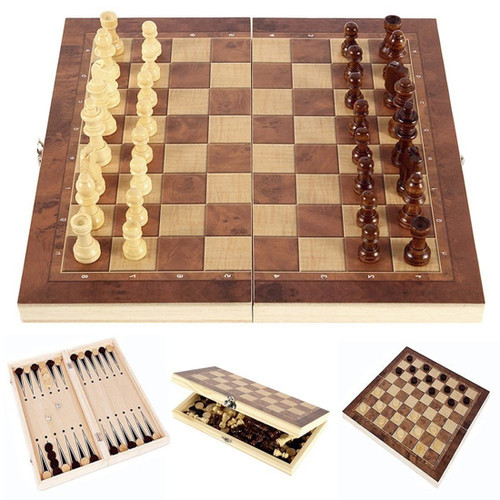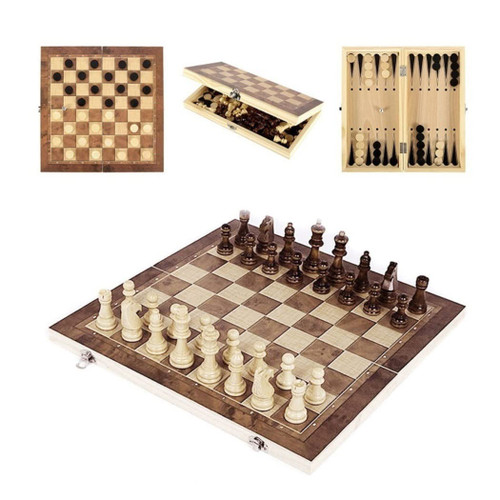Chess is played on a square board of eight rows (called ranks and denoted with numbers 1 to 8) and eight columns (called files and denoted with letters a to h) of squares. The pieces are divided, by convention, into white and black sets. The players are referred to as "White" and "Black", and each begins the game with sixteen pieces of the specified color. These consist of one king, one queen, two rooks, two bishops, two knights and eight pawns. White always moves first. The players alternate moving one piece at a time (with the exception of castling, when two pieces are moved simultaneously). Pieces are moved to either an unoccupied square, or one occupied by an opponent's piece, capturing it and removing it from play. With one exception (en passant), all pieces capture opponent's pieces by moving to the square that the opponent's piece occupies. When a king is under immediate attack by one or two of the opponent's pieces, it is said to be in check. The only permissible responses to a check are to capture the checking piece, interpose a piece between the checking piece and the king, or move the king to a square where it is not under attack. Castling is not a permissible response to a check. A move that would place the moving player's king in check is illegal. The object of the game is to checkmate the opponent; this occurs when the opponent's king is in check, and there is no way to remove it from attack. Each chess piece has its own style of moving. The X's mark the squares where the piece can move if no other pieces (including one's own piece) are on the X's between the piece's initial position and its destination. If there is an opponent's piece at the destination square, then the moving piece can capture the opponent's piece. The only exception is the pawn which can only capture pieces diagonally forward.
Chess Set?Folding Storage Wooden Chess Board Sets?3 in 1 Chess Board Game for Adults and Kids ?Chess?Backgammon?Checkers??Exquisite Wooden Chess Pieces
Was:
$99.88
Now:
$49.94
- SKU:
- ZY311264
- UPC:
- 791590171149
- Condition:
- New
- Availability:
- Free Shipping from the USA. Estimated 2-4 days delivery.









